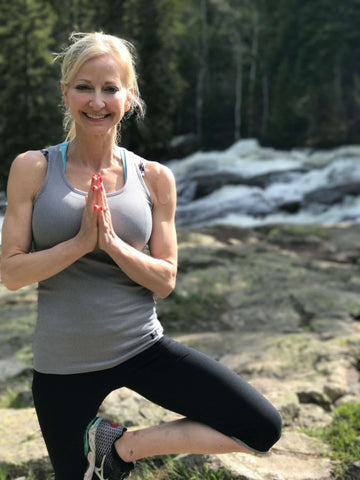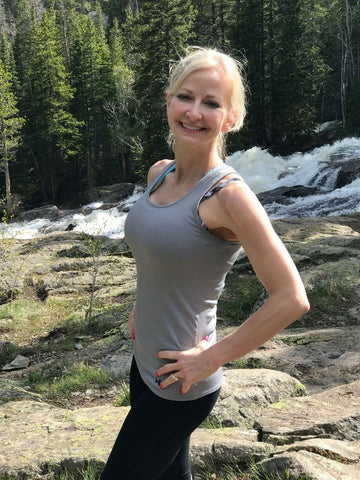Hiking to Improve Your Health- Inside and Out
by Angie Miller

Sometimes, at the just the right time, a vacation comes along and gives you much needed perspective. For me, it was the day after our moving truck pulled away. After living in our Chicago home for nine and a half years and heading into a future full of change, I knew that a break from reality was just what I needed. When it comes to vacation destinations, the mountains, with their unwavering strength and dignity, have a way of making us feel stronger, more powerful, and more at peace with our situation, and the mountains are where I headed.
Hiking through the mountains is always full of adventure. One minute you’re trekking through snow wearing a tank top, trying to maneuver your balance and still keep your eye on the blue diamonds guiding your path. You’re also looking out for the animals that you can’t see, but the oversized, fresh tracks next to your own footprints indicate they’ve been there. The next minute you’re climbing a steep, rocky hill through dense forest, crossing bridges with beautiful streams, and coming out into a clearing with the most breathtaking lake.
Full of sunshine, still waters, amazing scenery, and even a moose- one ran right across our path- hiking through the mountains is a great way to gather your thoughts and gain stamina and strength physically and mentally. I chose Colorado, but you can hike through your local park or at a National Forrest. According to Wikipedia, the United States has 154 National Forests that lie coast to coast and cover 188,336,179 acres. We chose two trails in Roosevelt National Forest, but I’m certain that no matter where you live, available trails are within a day’s drive. Once you lace up your hiking shoes and head out to witness all the natural wonders, you’ll recognize the peace that comes from reflecting on all that is right with the world.
If you’re still not convinced, here are five reasons hiking is good for your health:
Five Reasons Hiking is Good for Your Health
- Hiking improves your cardiorespiratory and muscular fitness.
- According to WebMD hiking lowers your risk of heart disease, improves your blood pressure, and helps build bone density.
- Hiking helps shape your glutes and the muscles in your legs, while also strengthening your core.
- Hiking helps improve your balance and stamina, and manage your weight.
- Best of all, hiking can reduce your stress and anxiety and boost your mood.
Summer is the best time to enjoy what nature has to offer, so head to the trails and soon you’ll be on a path to clearer thoughts, a healthier mind and body, and a fresh outlook.
Happy Hiking!

Muscles and mountains just go together.










- Angie
Angie Miller, M.S., is a fitness educator, university instructor, and Licensed Professional Counselor who blends her skills and expertise to empower individuals, mentally and physically, and provide them the tools they need to succeed. A veteran group exercise instructor and personal trainer, Angie is the star of acclaimed exercise DVD’s, including the Bedroom Body™ workout. Her passion for progressive education brought her to Northern Illinois University, where she teaches in the Dept. of Kinesiology & Physical Education. Outside of the university, she presents at fitness conventions worldwide and leads industry trainings as an AFAA Certification Specialist and Kettlebell Concepts Master Instructor. Angie writes for fitness journals and digital communities, and blogs for Collage Video. Connect with Angie at: http://www.angiemillerfitness.com



















